The French “Stuka”
France had no dive bomber for its naval aviation in the late 1930s, just as the type became popular, being explored by all aviations and starting with France’s neighbour, Germany. In 1936, a specification by the Air ministry Pierre Cot was emitted for an improved version of the prototype Nieuport Nid.140, now part of Loire and conducting giving Loire-Nieuport LN.40. The serie was finalized as a gull-wing inline engine sturdy machine, tailored for carrier service: The Béarn, and the future Joffre class. 152 were built in all, production resuming for the Vichy Air Force in 1941. None ever operated from Béarn, the bulk bing used (and lost) in operations of May over France and later in June over Italy.
About the Nieuport Ni 140

The Loire-Nieuport LN.140 prototype in 1934. Note the rear turret and fixed undercarriage wih massive fairings
In the early thirties the old Nieuport company (founded 1911), started to show interest in possibilities offered by dive bombing tactics which was pioneered briefly by the Royal Air Force in 1917-18. The exercize stressed excessive structural efforts and required special attention in construction. However, beyond this, the precision offered by a dive bomber proved to be promising, in particular in naval warfare, perhaps even more than for the air force.
At the time, the Marine Nationale bolstered since 1928 a single aircraft carrier, the Béarn. In the 1930s, she was mostly given sturdy ad well-crafted biplanes, the Levasseur Pl.5,7,9,10 types used for bombing, torpedo-bombing and reconnaissance. Fighters were parasol types such as the Wibault 75, then Loire Gourdou-Lesseure 32, Dewoitine 376, superseded in turn at the end of the 1930s by the Morane 226. The naval staff saw with interest what a dive bomber could do, seeing what the USN tried from its own fleet CVs of the Lexington class.
Specifications were emitted in 1932 by the air ministry for a derivative of the Loire 140. Between 1932 and 1936, Nieuport-Delage developed a two-seat dive bomber called Nieuport Ni.140, for the Aéronautique Navale, the semi-independent aviation arm of the French Navy. It was renamed Loire-Nieuport LN.140 after Nieuport was absorbed by Loire, forming the Loire-Nieuport company in 1933. The first of two prototypes, LN.140-01, was flown on 12 March 1935. Unfortunately it crashed in July during a forced landing and was never repaired. The second indeed, LN.140-02 was more advanced already, but eventually development was abandoned after it crashed also in July 1936.
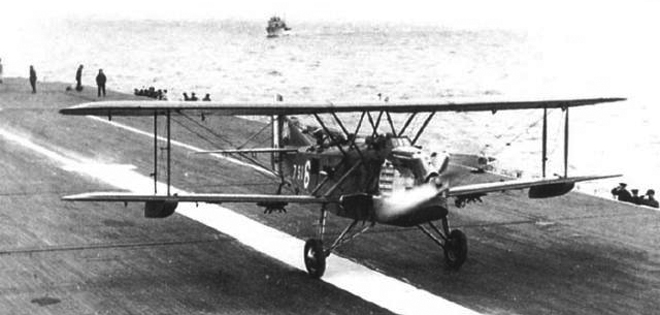
Levasseur PL.101 (1933), standard recce/bomber onboard Béarn
The workload was shared (as the production) between Loire and Nieuport. The team was led by the chief engineer Pillon, which from the started drew a model characterized by a low-positioned wing, inverted gull, and fixed landing gear and completely faired. It also had a two-seat tandem cockpit.
The construction of two prototypes at Issy-les-Moulineaux plant was completed in 1934. They were given for one time the prefix JNV but since Gustave Delage joined the company in 1914 and decided to leave the company in 1934, the original suffix Ni was kept. The appearance was quite close to the Junkers Ju 87 developed at the time, and such similarity had German Government denouncing and accusing Pillon of plagiarism and espionage during the German occupation. It was also the origin of the “French Stuka” moniker.
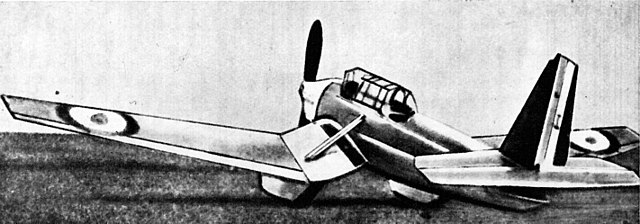
LN 40 Prototype, rear view.
The Ni-01 140 early short tests assesses characteristics in March and by July, started more arduous manoeuvers, which led ultimately to a crash landing, being completely destroyed as the result. The second prototype in November already fixed some issues, tested many changes notably in the overall wing design, tail, and fairing, now shorter. The crash happened when the pilot was diving, trying to correct its alignment. He died in the attempt.
These two crashed at the time were enough to convince the French Navy commission to reject the proposal. Despite this failure, the prototypes still showed what they could achieve without looking at foreign models, and with further development, could be developed as a modern, superb dive bomber ready for mass production. The base tree that was developed led to a “navalized” version called Loire-Nieuport LN-401 and a land one, the LN-411, both aiming at production in small series, when upon precisely production issue under the Popular Front, Nieuport was merged into the state consortium SNCAO (Société Nationale des Constructions Aéronautiques de l’Ouest) around Bréguet in Bouguenais, and Loire-Nieuport based in St Nazaire, Normandy. Under its own name, the consortium only managed to create the seaplane SNCAO 30 for the Navy, the fighter SNCAO 200, the naval (land-based) torpedo-bomber SNCAO CAO.600 or the CAO.700. All were prototypes, their development dragging until 1940. Meanwhile, both Bréguet and Loire-Nieuport produced their own, more sucessful models.
Development of the LN-40 serie
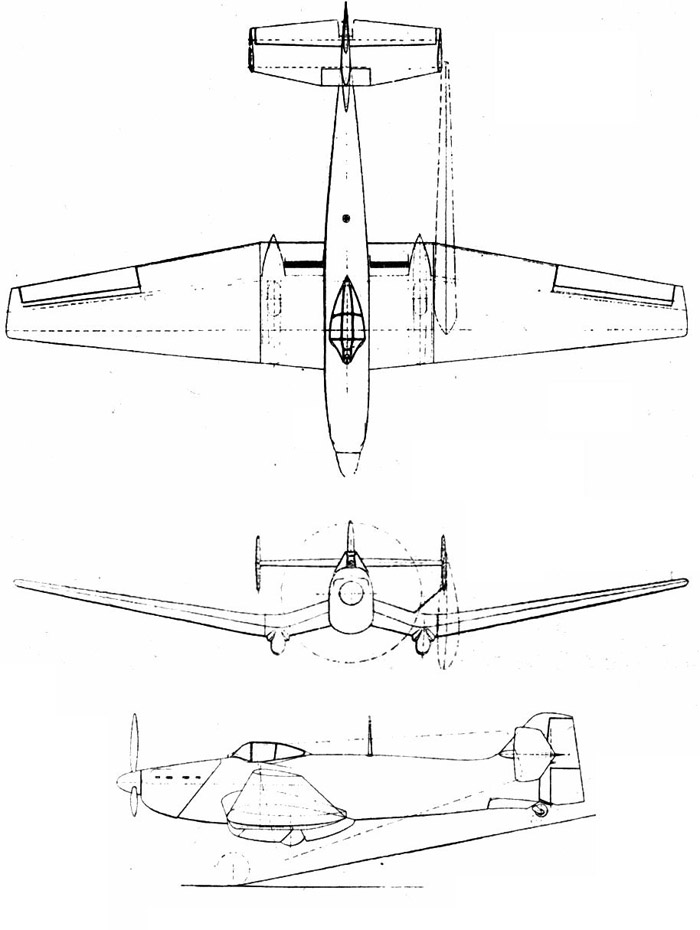
LN 40 general scheme, showing also the longitudinally pivot-folding wings.
From the experience gained with the Ni-140 prototypes, Pillon’s team in 1936 started development of a lighter, nimbler and single-seat shipboard dive bomber. It was designed with a semi-retractable undercarriage and had revised tail and control surfaces. The first prototype was startet at the Issy Les-Moulineaux plant near Paris, in 1937, designated LN 40 No. l. However it only made its first trials at nearby Villacoublay in June 1938. Onboard was SNCAO’s chief test pilot Pierre Nadot.
Flight trials revealed the need for additional vertical tail surface area, and auxiliary balancing fins added to the tailplane. The prototype as modified was ready to start its official trials in September 1938. Further trials went on at the naval test center of Saint Raphael (south of France, Riviera) and after they were successful, the prototype started a serie of always dangerous dives in November. But this time it went well: In all, the prototype made 15 dives. Soon also, ten arrested landings were made onboad Béarn. Six preserie LN 40s were ordered in 1937 already even as prototype trials were not done. This first production batch was later standardiized as the LN 401. An additional 36 were then ordered for the French Navy, in February 1939. Deliveries started quickly, by mid-1939, since the tooling already was made ready in 1938 for the preserie.
The land-based Armee de l’Air LN 411
Meanwhile, the Armée de I’Air followed the trials and was impressed enough to pursue the development of the army model, already convinced by reports coming from axis experience in the Spanish civil war, notably with the Junkers 87A Stuka. The air ministry ordered 40 of the modified land-based version called LN 411. They differed in having non-folding wing and no arrester hook as well as other detail modifications. On October 1939, after many trials, the French Air Force however concluded that the LN 411 performance were too inferior for successful operation and thus, it was agreed with the French Navy that the next batch of 39 LN411 ordered were taken over for it’s own branch. The only remaining model was kept and converted as the prototype LN 42 (see later).
Design
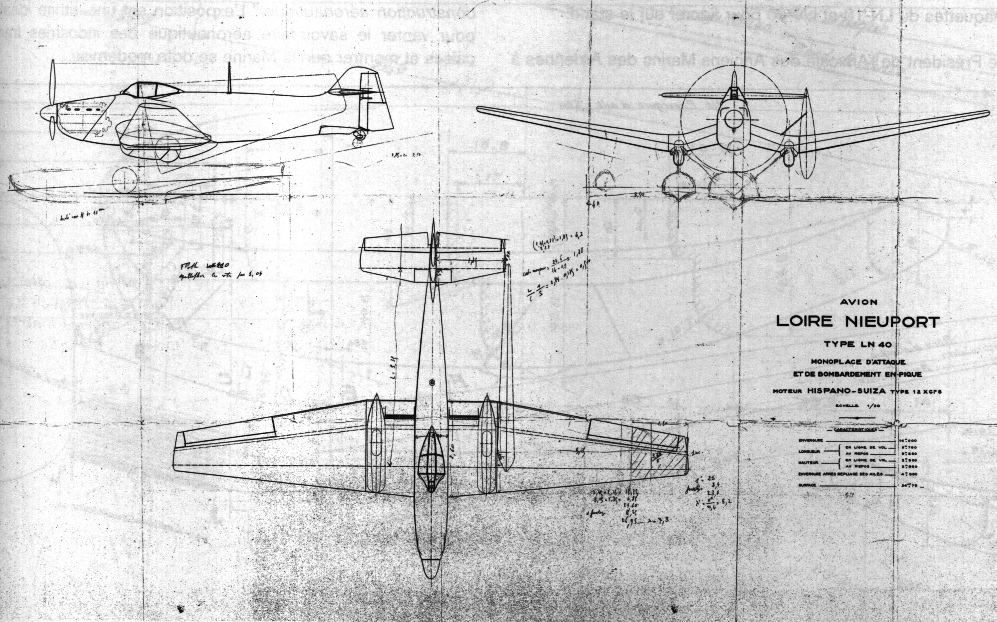
LN 401 blueprint. Note a convetible floatplane version was also studied for the Navy, with a belly main float plus two underwings, or two main floats under the undercarriage fairings. It was never developed further.
The LN 40 serie was an inverted gull wing monoplane. This arrangement was chosen just for the reason its manually operated wing folding mechanism could be situated at a convenient height for the operators. But it had an impact on the air flow nevertheless. It had a monocoque fuselage inspired by the experiental Ni-161 fighter. All fuel storage were housed in the broad wing center section.
The lower half of its rudder was divided vertically to be opened opened in two segments at right angles. They acted as such as dive brakes. There was also a crutch beneath the fuselage, which swung forward to ensure the bomb cleared the propeller when released. The main undercarriage structure retracted rearwards, and still remained semi-exposed when retracted, with the wheels vertical.
The landing gear tubes and suspensions were protected by the front fairing which, when folded up, blended with the wing. Empty weight was 2,243 kg, fulluy loaded 2,835 kg respectively, and overall dimensions were a length of 9,75 m, for 3,5 m in height at the tip of the tail, for a span of 14 m and wing area of 24,75 m2.
Engine & Performances
The LN 401 was powered by a Hispano-Suiza 12Xcrs 12-cylinder (V12), liquid-cooled engine, rated for 690 hp at 4,000 m (). It could reach a top speed of 320 km/h at sea level, 380 km/h at 4,000 m. Maximum cruising speed was 340 km/h, range 1,200 km which was largely enough for naval operations behind the horizon (by comparison the Dauntless reached 1,794 km and was much faster).
Armament
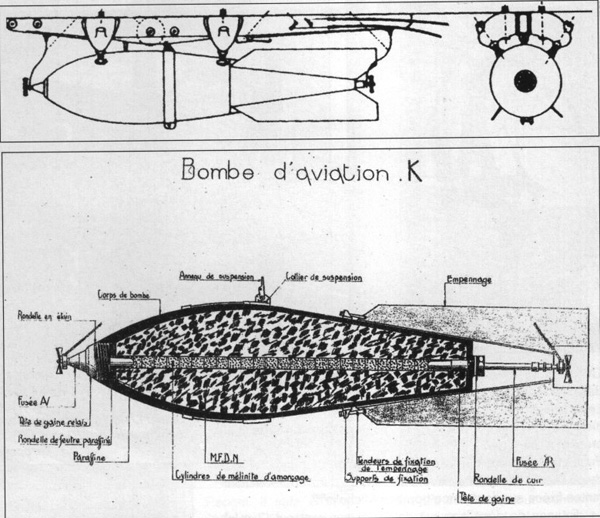
Onboard armament as designed comprised a single engine-mounted 20-mm Hispano-Suiza cannon (which was quite powerful at the time for a dive bomber), plus and two, more standard wing-mounted 7,5-mm Darne machine guns. Its bomb load was limited however, as the belly rack only supported a single 225-kg of the BEA 1938 type or a single 150-kg Type 12. This was mostly the fact of using a 700 hp engine, whereas the Dauntless was almost twice as powerful, with a Wright R-1820-60 Cyclone of 1,200 hp. It could also carry more underwings for strafing attacks, ten 10 kg (22 lb) on 15 kg (33 lb) bomblets.
Detailed specs
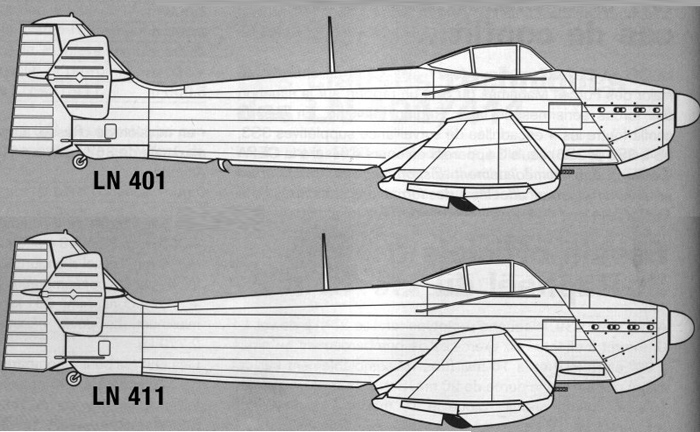
Comparison between the LN 401 and 411. Apart the hook there is not much to tell them apart but looking at their wings’ gull slip, fixed on the latter case
Specs LN 411 (largest production= |
|
| Crew: | One pilot |
| Fuselage Lenght | 9.75 m (32 ft) |
| Wingspan | 14 m (45ft 11in) |
| Height | 3.5 m (11ft 6in) |
| Empty weight: | 2,135 kg (4,500 lb) |
| Gross weight: | 2,835 kg (6,250 lb) |
| Powerplant: | Hispano Suiza 12Xcr V12 engine, 510 kW (690 hp)/4,000m |
| Propellers: | 3-bladed fixed-pitch propeller |
| Maximum speed: | 380 km/h (240 mph, 210 kn) |
| Cruise speed: | 299 km/h (186 mph, 161 kn) |
| Endurance: | 3½ hours |
| Range: | 1,200 km (750 mi, 650 nmi) |
| Service ceiling: | 9,500 m (31,200 ft) |
| Armament – Guns | 1x nose 20mm Hispano HS404, 2× wings 7.5 mm (.303 in) Darne machine guns. |
| Armament – Bombs | 1x 225 kg (496 lb)/165 kg (364 lb) bomb, 10×10 kg (22 lb)/15 kg (33 lb) bombs |
Operations

The first sixteen LN 401s were undergoing acceptance trials in November 1939, when issued to Escadrilles AB2 and AB4. Béarn at the time was engaged in taxiing to France warplanes purchased in the USA via Canada, and so the LN 401s never started shipboard operations training. Instead, they remained shore-based for their whole career. Escadrille AB4 converted later from the LN 401 to the LN 411, in April 1940. The former LN 401s were distributed among Escadrille AB2, a conversion unit created at Lanvéoc-Poulmic (Britanny) and the remainder parked in a war reserve at Cherbourg.
By May 10, 1940, AB2 and AB4 had 12 aircraft each, the former being relocaed at Berck, Pas de Calais, and the latter, still undergoing training, at Cherbourg-Querqueville. AB2 made first sorties with the LN 411s of AB4 from Berck on May 17th. Two days later, ten were lost on their objectives to a firce FLAK during an attack by 20 aircraft on the crossroads at Berlaimont, falling on elements of the 7th and 5th Panzer Divisions. Only ten went back and reached Berck.
They had been already so badly damaged by shrapnel that on the following day only three were serviceable to mount another attack, on the Origny Bridge (Oise River). There, FLAK was less intense and moreover they arrived after a squadrons of 11 US-built Vought 156 from AB1 Sqn. The latter took the brunt of the Luftwaffe and were all short down, allowing the LN 401s to reach their objective and drop their bombs. And only one was lost. On May, 21st, another was shot down, leaving only one, just repaired, truly airworthy machine.
At the time, orders for the LN 401 and 411 were still placed and before May 29, 1940, some 152 aircraft had been delivered total. Only a small proportion were completed, but between distribution and lack of pilots they were just parked, awaiting their fate. Between these new machines and those repaired, both squadrons were fully reconstituted with a total of 10 LN 401s and 411s, on 22 May. Operations were suspended as the ground personnel already was captured in the Boulogne area.
Both squadrons moved to Hyeres, southern France on June 4th. They flew some reconnaissance missions along the Italian coastline, and when Italy declared war on France, started air cover missions at least for French Navy during Operation Vado, the shelling of Genoa on June 14th. On 17-18 June, 13 machines bombarded the port of Imperia. On the 23-25th, the two squadrons, like most active units evacuated from the north, flew to Africa. These arrived in Bone, Algeria. On 1st August, the two Sqn. were redesignated 2AB and 4AB, and converted later to Martin 167s bombers, also evacuated.
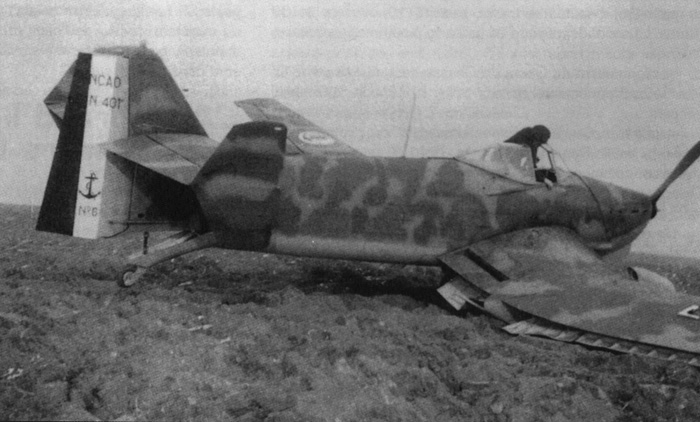
Crashed LN401 N°6 in May 1940
The surviving LN 401s and 411s were disassembled for long term storage. In 1941 the Chateauroux SNCASO plant assembled under German control 24 LN 401s and 411s from recovered components, authorized as part of the air defence in thee unoccupied zone (Vichy air force). In November 1942, when after Operation Torch, the German launched their occupation of Vichy France (Operation Paula), those in storage at Bizerte-Karouba were destroyed by an Allied bombing raid during the landings.
The upgraded LN 402 and 42
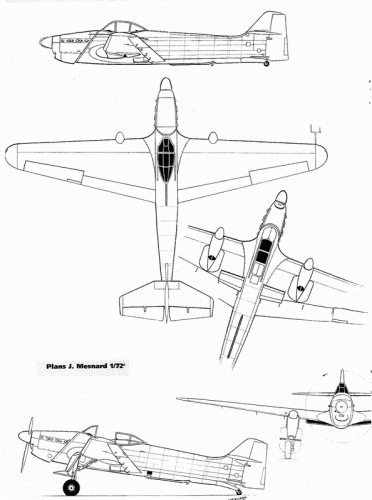 A single LN 402 was tested by the Armee de l’air with a 860 hp Hispano-Suiza 12Y31 engine. It was still incomplete at Issy Les-Moulineaux plant by June 1940 when captured. Next was developed the LN 401. It had the same fuselage as the LN 401-411 but with an upgraded 1,100 hp engine and redesigned wings to cope with the faster air flow, with reduced span (13 m) and 21 m2 wing area.
A single LN 402 was tested by the Armee de l’air with a 860 hp Hispano-Suiza 12Y31 engine. It was still incomplete at Issy Les-Moulineaux plant by June 1940 when captured. Next was developed the LN 401. It had the same fuselage as the LN 401-411 but with an upgraded 1,100 hp engine and redesigned wings to cope with the faster air flow, with reduced span (13 m) and 21 m2 wing area.
The prototype was transported by rail to Istres, Southern France, making short runs on the airport, and a few flying hops as reported, to be later hidden in a farm at Flayosque, Draguignan, alongside the SO 30N commercial transport prototype. Never discovered by the Germans, after the liberation the LN 42 was transported to Toussus-le-Noble airport for official trials. It flew on August 24, 1945. But the program went no futher as aviation technology made giant leaps in between, and the next summer in 1946, it was fitted with a reversible-pitch Escher-Wyss propeller. It flew with it on October 28, 1946. However at that stage the new Armee de l’Air estimated it was now totally obsolete and decided to have it scrapped.
Read More and Sources
books
Les Bombardiers en piqué Loire-Nieuport
Lucien Morareau, Les aéronefs de l’aviation maritime : 1910-1942, Paris, ARDHAN, 2002
Enzo Angelucci et Paolo Matricardi, Les avions, t. 3 : La Seconde Guerre mondiale
links
aviastar.org
histaviation.com
On wikipedia EN
aviafrance.com
ww2aircraft.net
wardrawings.be
militaryfactory.com
avionslegendaires.net
forum.warthunder.com
aviadrix.blogspot
histoiredumonde.net
On fandavion.free.fr LN411
On fandavion.free.fr LN42
On secretprojects.co.uk
Model Kits
On scalemates – Special Hobby | No. SH48058 | 1:48
More on the same site
Loire-Nieuport LN.411 Azur 1:48, CMB 1:72 resin. That’s about it.

LN 401 N°8, AB-4, Berck, May 1940.
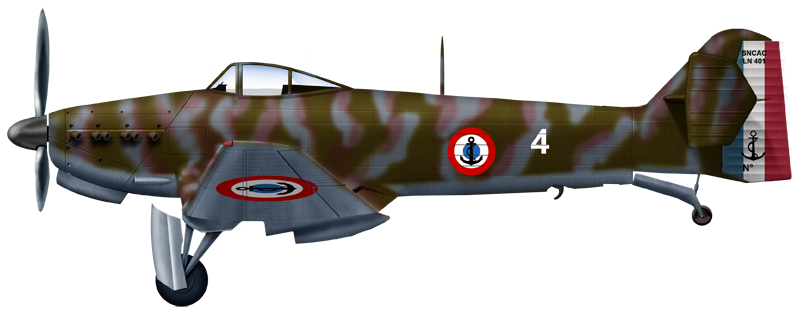
LN 411, wheeltrain down, reconstituted AB-4, June 1940

Vichy Air Force, LN 411, Hyeres AB Fall 1942
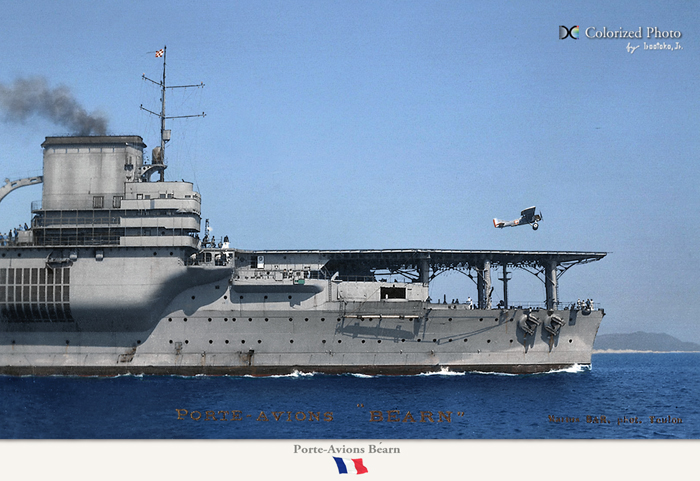
The French aircraft carrier Béarn
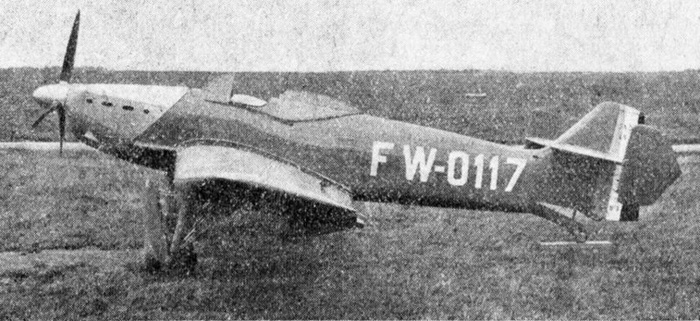
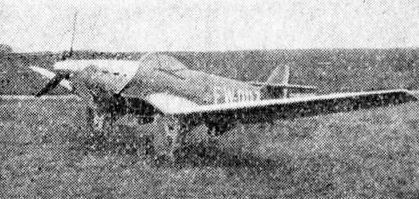
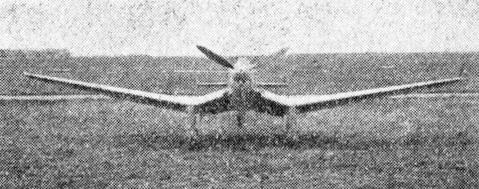
Photos from L’aerophile August 1943
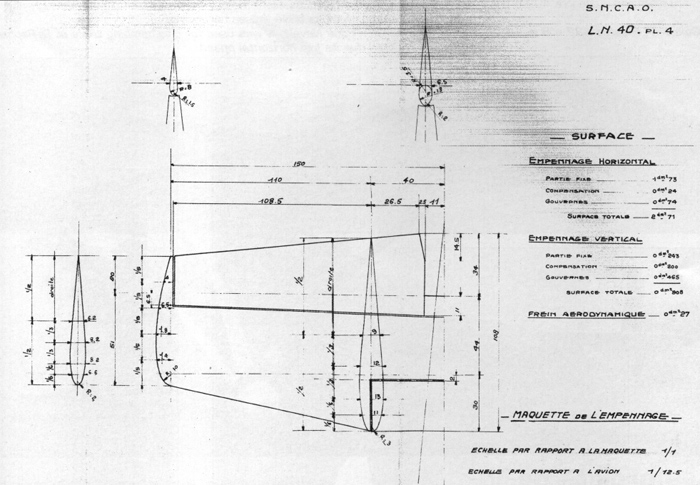
Wing design bueprints
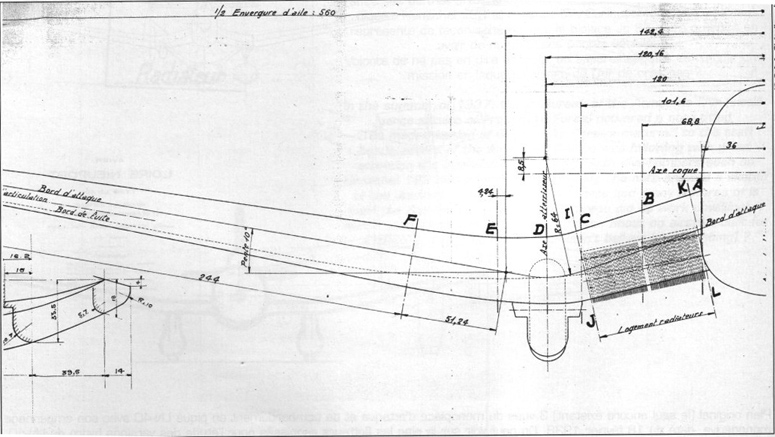
Wing design bueprints
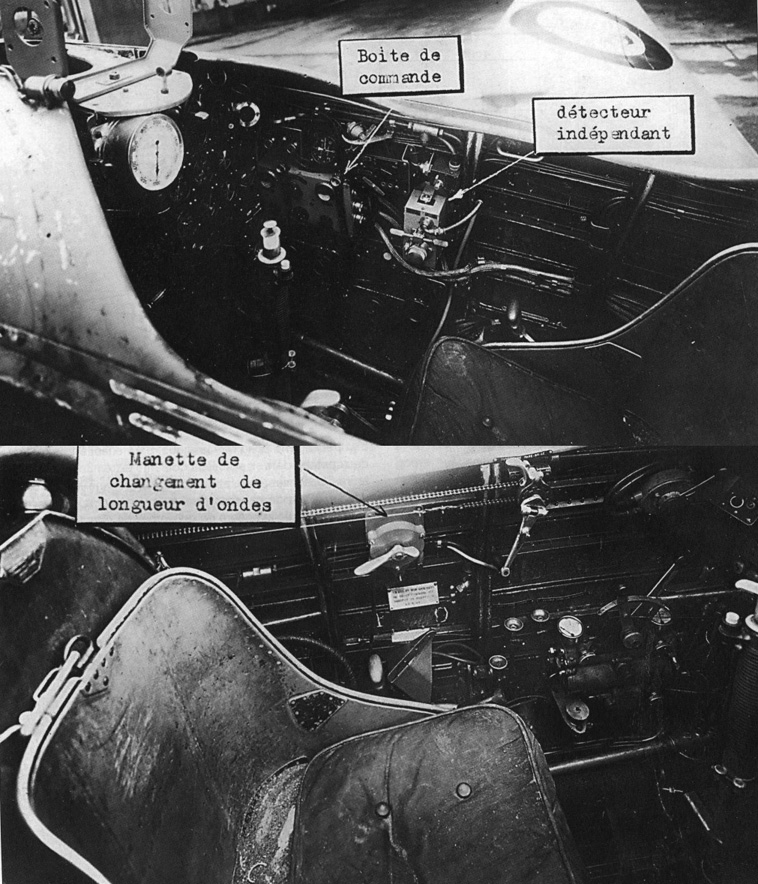
Cockpit interior
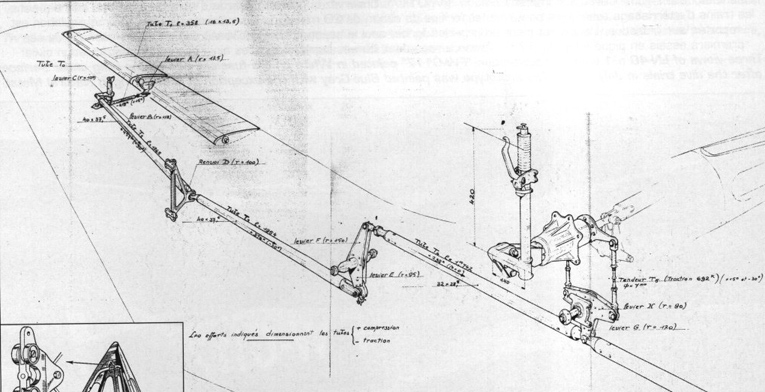
Ailerons drive scheme

The loire-Nieuport Ni 161 prototype, a related development fighter, three prototypes built.


 Latest Facebook Entry -
Latest Facebook Entry -  X(Tweeter) Naval Encyclopedia's deck archive
X(Tweeter) Naval Encyclopedia's deck archive Instagram (@navalencyc)
Instagram (@navalencyc)





 French Navy
French Navy Royal Navy
Royal Navy Russian Navy
Russian Navy Armada Espanola
Armada Espanola Austrian Navy
Austrian Navy K.u.K. Kriegsmarine
K.u.K. Kriegsmarine Dansk Marine
Dansk Marine Nautiko Hellenon
Nautiko Hellenon Koninklije Marine 1870
Koninklije Marine 1870 Marinha do Brasil
Marinha do Brasil Osmanlı Donanması
Osmanlı Donanması Marina Do Peru
Marina Do Peru Marinha do Portugal
Marinha do Portugal Regia Marina 1870
Regia Marina 1870 Nihhon Kaigun 1870
Nihhon Kaigun 1870 Preußische Marine 1870
Preußische Marine 1870 Russkiy Flot 1870
Russkiy Flot 1870 Svenska marinen
Svenska marinen Søværnet
Søværnet Union Navy
Union Navy Confederate Navy
Confederate Navy Armada de Argentina
Armada de Argentina Imperial Chinese Navy
Imperial Chinese Navy Marinha do Portugal
Marinha do Portugal Mexico
Mexico Kaiserliche Marine
Kaiserliche Marine 1898 US Navy
1898 US Navy Sovietskiy Flot
Sovietskiy Flot Royal Canadian Navy
Royal Canadian Navy Royal Australian Navy
Royal Australian Navy RNZN Fleet
RNZN Fleet Chinese Navy 1937
Chinese Navy 1937 Kriegsmarine
Kriegsmarine Chilean Navy
Chilean Navy Danish Navy
Danish Navy Finnish Navy
Finnish Navy Hellenic Navy
Hellenic Navy Polish Navy
Polish Navy Romanian Navy
Romanian Navy Turkish Navy
Turkish Navy Royal Yugoslav Navy
Royal Yugoslav Navy Royal Thai Navy
Royal Thai Navy Minor Navies
Minor Navies Albania
Albania Austria
Austria Belgium
Belgium Columbia
Columbia Costa Rica
Costa Rica Cuba
Cuba Czechoslovakia
Czechoslovakia Dominican Republic
Dominican Republic Haiti
Haiti Hungary
Hungary Honduras
Honduras Estonia
Estonia Iceland
Iceland Eire
Eire Equador
Equador Iran
Iran Iraq
Iraq Latvia
Latvia Liberia
Liberia Lithuania
Lithuania Mandchukuo
Mandchukuo Morocco
Morocco Nicaragua
Nicaragua Persia
Persia San Salvador
San Salvador Sarawak
Sarawak Uruguay
Uruguay Venezuela
Venezuela Zanzibar
Zanzibar Warsaw Pact Navies
Warsaw Pact Navies Bulgaria
Bulgaria Hungary
Hungary

 Bundesmarine
Bundesmarine Dutch Navy
Dutch Navy Hellenic Navy
Hellenic Navy Marina Militare
Marina Militare Yugoslav Navy
Yugoslav Navy Chinese Navy
Chinese Navy Indian Navy
Indian Navy Indonesian Navy
Indonesian Navy JMSDF
JMSDF North Korean Navy
North Korean Navy Pakistani Navy
Pakistani Navy Philippines Navy
Philippines Navy ROKN
ROKN Rep. of Singapore Navy
Rep. of Singapore Navy Taiwanese Navy
Taiwanese Navy IDF Navy
IDF Navy Saudi Navy
Saudi Navy Royal New Zealand Navy
Royal New Zealand Navy Egyptian Navy
Egyptian Navy South African Navy
South African Navy






























 Ukrainian Navy
Ukrainian Navy dbodesign
dbodesign